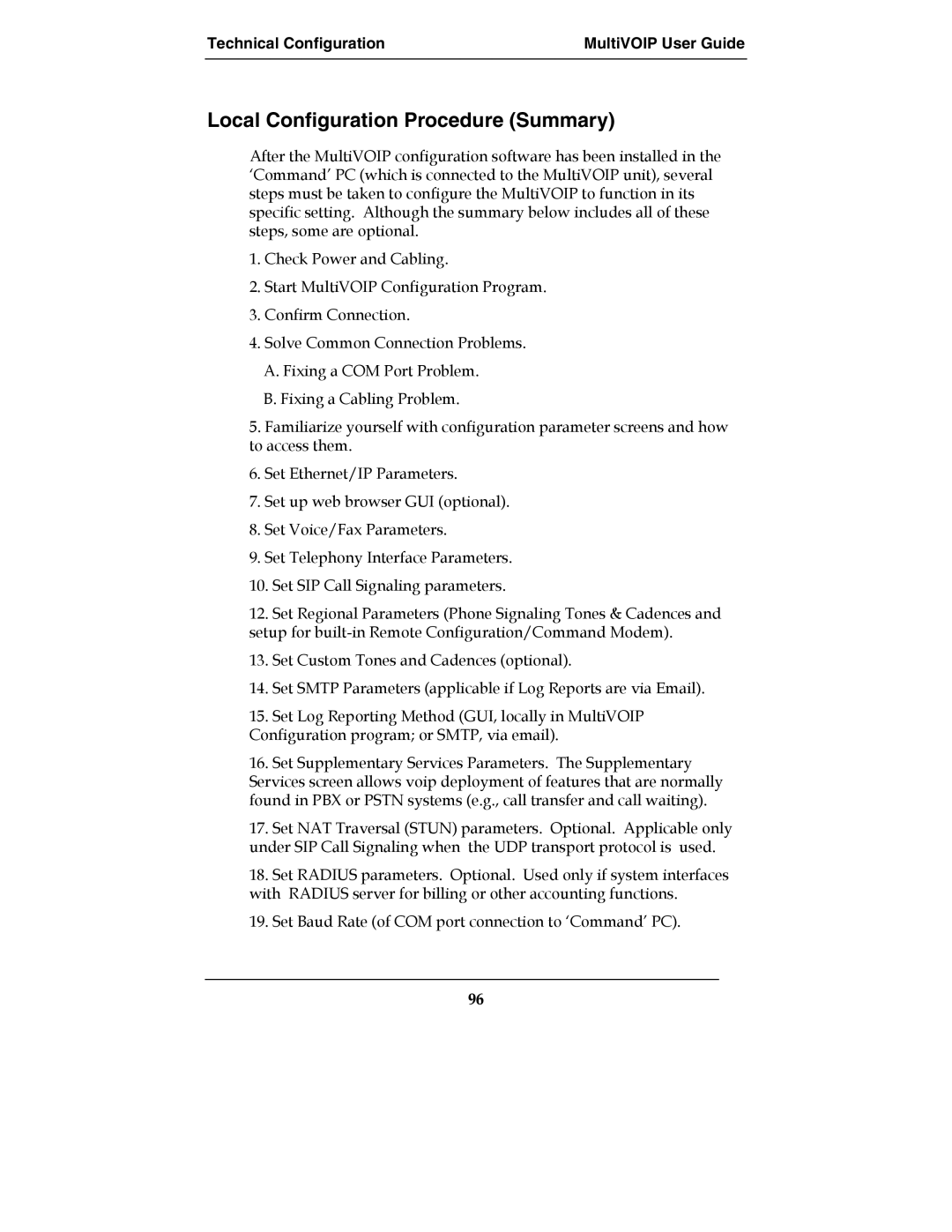Technical Configuration | MultiVOIP User Guide |
|
|
Local Configuration Procedure (Summary)
After the MultiVOIP configuration software has been installed in the ‘Command’ PC (which is connected to the MultiVOIP unit), several steps must be taken to configure the MultiVOIP to function in its specific setting. Although the summary below includes all of these steps, some are optional.
1.Check Power and Cabling.
2.Start MultiVOIP Configuration Program.
3.Confirm Connection.
4.Solve Common Connection Problems.
A.Fixing a COM Port Problem.
B.Fixing a Cabling Problem.
5.Familiarize yourself with configuration parameter screens and how to access them.
6.Set Ethernet/IP Parameters.
7.Set up web browser GUI (optional).
8.Set Voice/Fax Parameters.
9.Set Telephony Interface Parameters.
10.Set SIP Call Signaling parameters.
12.Set Regional Parameters (Phone Signaling Tones & Cadences and setup for
13.Set Custom Tones and Cadences (optional).
14.Set SMTP Parameters (applicable if Log Reports are via Email).
15.Set Log Reporting Method (GUI, locally in MultiVOIP Configuration program; or SMTP, via email).
16.Set Supplementary Services Parameters. The Supplementary Services screen allows voip deployment of features that are normally found in PBX or PSTN systems (e.g., call transfer and call waiting).
17.Set NAT Traversal (STUN) parameters. Optional. Applicable only under SIP Call Signaling when the UDP transport protocol is used.
18.Set RADIUS parameters. Optional. Used only if system interfaces with RADIUS server for billing or other accounting functions.
19.Set Baud Rate (of COM port connection to ‘Command’ PC).
96
